Related Research Articles
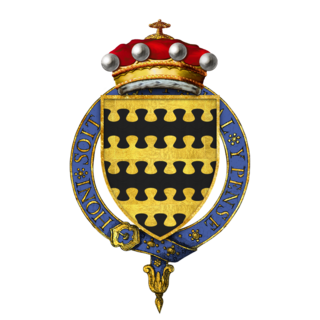
William Blount, 4th Baron Mountjoy, KG, of Barton Blount, Derbyshire, was an extremely influential English courtier, a respected humanistic scholar and patron of learning. He was one of the most influential and perhaps the wealthiest English noble courtier of his time. Mountjoy was known internationally as a humanist writer and scholar and patron of the arts.

John Bourchier, 2nd Baron Berners was an English soldier, statesman and translator.
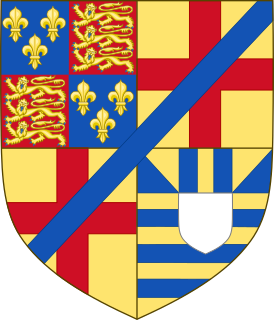
Arthur Plantagenet, 1st Viscount Lisle, KG was an illegitimate son of the English king Edward IV, half-brother-in-law of Henry VII, and an uncle of Henry VIII, at whose court he was a prominent figure and by whom he was appointed Lord Deputy of Calais (1533–40). The survival of a large collection of his correspondence in the Lisle Letters makes his life one of the best-documented of his era.

Sir Richard WingfieldKG of Kimbolton Castle was an influential courtier and diplomat in the early years of the Tudor dynasty of England.

Katherine Brandon, Duchess of Suffolk, suo jure12th Baroness Willoughby de Eresby, was an English noblewoman living at the courts of King Henry VIII, King Edward VI and Queen Elizabeth I. She was the fourth wife of Charles Brandon, 1st Duke of Suffolk, who acted as her legal guardian during his third marriage to Henry VIII's sister Mary. Her second husband was Richard Bertie, a member of her household. Following Charles Brandon's death in 1545, it was rumoured that King Henry had considered marrying Catherine as his seventh wife, while he was still married to his sixth wife, Catherine Parr, who was Katherine's close friend.
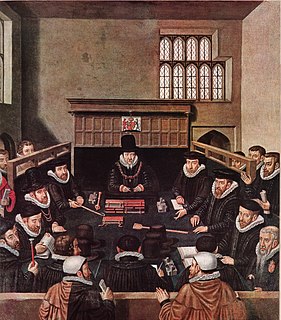
The Court of Wards and Liveries was a court established during the reign of Henry VIII in England. Its purpose was to administer a system of feudal dues; but as well as the revenue collection, the court was also responsible for wardship and livery issues.

William Sandys, 1st Baron Sandys of the VyneKG was an English Tudor diplomat, Lord Chamberlain and favourite of King Henry VIII.

Gregory Cromwell, 1st Baron Cromwell, KB was an English Peer. He was the only son of the Tudor statesman Thomas Cromwell, 1st Earl of Essex and Elizabeth Wyckes.
Thomas Benolt was a long-serving officer of arms at the College of Arms in London. As part of his service, he was also a diplomat. He appears to have been born at Rouen, though his family had stronger links with Calais. Benolt is thought to have been raised in that city, and his brother at one time became its secretary. Thomas Benolt is reported to have served Kings Edward IV and Richard III as a pursuivant, but these claims cannot be substantiated. The first definitive evidence of his royal service is an appointment as Windsor Herald of Arms in Ordinary on 6 May 1504. Six years later, he was promoted to the post of Norroy King of Arms and on 30 January 1511 he was made Clarenceux King of Arms.
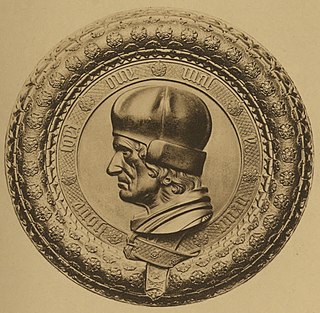
Sir Thomas Lovell, KG was an English soldier and administrator, Speaker of the House of Commons, Secretary to the Treasury and Chancellor of the Exchequer.

William Willoughby, 1st Baron Willoughby of Parham was an English nobleman and soldier who in 1547 was made an hereditary peer of the House of Lords.

Thomas Grey, 2nd Marquess of Dorset was an English peer, courtier, soldier, and landowner.

Thomas Darcy, 1st Baron Darcy of Darcy or of Temple Hurst, was an English nobleman, the only son, and heir, of Sir William Darcy and his wife, Euphemia Langton, the daughter of Sir John Langton. Darcy was opposed to the Dissolution of the Monasteries, and for his role in the Pilgrimage of Grace was convicted of high treason for delivering up Pontefract Castle to the rebels. He was executed on Tower Hill 30 June 1537.
Sir Thomas Neville or Nevill was a younger son of George Neville, 4th Baron Bergavenny. He was a prominent lawyer and a trusted councillor of King Henry VIII, and was elected Speaker of the House of Commons in 1515.

Sir Richard Guildford, KG was an English courtier who held important positions at the court of Henry VII, including the office of Master of the Ordnance.
Henry VIII of England had several children. The best known children are the three legitimate offspring who survived infancy and would succeed him as monarchs of England successively, Edward VI, Mary I and Elizabeth I.
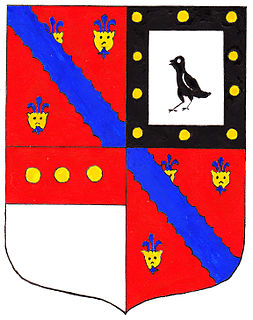
Sir William Denys (1470–1533) of Dyrham, Gloucestershire, was a courtier of King Henry VIII and High Sheriff of Gloucestershire in 1518 and 1526.
Richard Delahide was an Irish judge of the sixteenth century, who held the offices of Chief Justice of the Irish Common Pleas and Chief Baron of the Irish Exchequer. His career was seriously damaged by the Rebellion of Silken Thomas, in which several members of his family played a leading part, and he narrowly escaped permanent disgrace.

Sir William Courtenay"The Great", of Powderham in Devon, was a leading member of the Devon gentry and a courtier of King Henry VIII having been from September 1512 one of the king's Esquires of the Body. He served as Sheriff of Devon three times: from February to November 1522, 1525/6, and 1533/4. He was elected Knight of the Shire for Devon in 1529.
Sir Edward Wotton (1489–1551) was the Treasurer of Calais and a privy councillor to Edward VI of England.
References
. Dictionary of National Biography . London: Smith, Elder & Co. 1885–1900.